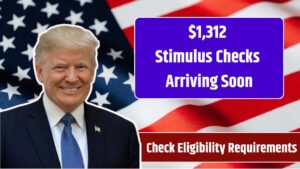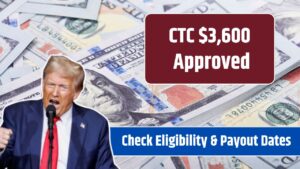As April gets underway, millions of Americans are watching their finances closely—hoping for a little extra support to offset rising costs. The latest buzz centers around a potential $800 stimulus check, designed to give families and individuals a much-needed boost. With inflation still pressuring everyday budgets, this one-time payment could offer timely financial relief.
If you’re unsure whether you qualify or how to claim it, this guide breaks down everything you need to know—from income thresholds to payment timelines and more.
What Is the $800 Stimulus Check?
The $800 stimulus check is part of a targeted government effort aimed at easing economic strain for lower- and middle-income households. With the cost of living climbing and uncertainty looming in the economy, the goal is simple: put money in the hands of those who need it most.
Whether you’re covering basic necessities, catching up on bills, or building a rainy-day fund, this payment is meant to help you navigate financial headwinds.
Key Details at a Glance
| Feature | Details |
|---|---|
| Eligibility | Based on income, household size, and recent tax filings |
| Payment Timing | Expected to begin late April 2024 |
| Claim Process | Mostly automatic; some may need to file manually |
| Purpose | Offset inflation and boost consumer spending |
| Official Source | IRS (Internal Revenue Service) |
Who Qualifies for the $800 Stimulus?
Your eligibility hinges on your adjusted gross income (AGI) as reported on your latest tax return. If you’re within the income limits, you’re likely to receive the full amount.
| Filing Status | Income Limit for Full Payment |
|---|---|
| Single | Less than $75,000 |
| Head of Household | Less than $112,500 |
| Married Filing Jointly | Less than $150,000 |
If your income exceeds these thresholds, the stimulus amount gradually phases out. For example, someone earning slightly over the limit might receive a reduced payment rather than nothing at all.
Additional Payments for Dependents
Raising kids? The stimulus package includes extra funds for dependents under age 17. This could mean hundreds more in your check, depending on how many dependents you claim. It’s part of an effort to address the unique financial pressure families face in high-cost environments.
Filing Status: Automatic or Manual?
If you filed a tax return in the last year or two and meet the eligibility requirements, you’re likely to receive your payment automatically. However, if you haven’t filed—perhaps due to low or no income—you might need to take action.
In that case, you should:
- File a basic return using Form 1040, or
- Use the IRS Non-Filers Tool to provide your information.
This ensures the IRS has what they need to process your payment correctly.
When Will Payments Arrive?
The IRS has indicated that disbursements will begin in late April 2024, though an exact date hasn’t been confirmed. This timing aligns with spring expenses and the tail-end of tax season, when many families could really use the extra support.
How Will You Receive the $800?
There are three main delivery methods:
- Direct Deposit – Fastest option if the IRS has your bank account info.
- Paper Check – Mailed to your listed address. May take longer to arrive.
- Prepaid Debit Card – Some recipients will get a Visa-branded card by mail.
Important: Make sure your mailing address and bank details are current with the IRS to avoid delays.
How to Claim Your Payment
Not sure how to get started? Here’s a step-by-step overview to make sure you’re covered:
- Check Eligibility – Use the IRS’s Eligibility Tool online to verify.
- Update Information – If you’ve moved or changed banks, log into the IRS website to update your profile.
- File if Necessary – Non-filers must submit a 2023 tax return or use the IRS Non-Filers Tool.
- Track Your Payment – Visit the “Get My Payment” portal on the IRS site to monitor your payment status.
The $800 stimulus check comes at a critical time for many households navigating rising expenses and economic uncertainty. Whether you use it to catch up on bills, fill your pantry, or pad your savings, it’s designed to offer meaningful short-term relief.
To make sure you don’t miss out, confirm your eligibility, update your IRS records, and track your payment online. And remember—the IRS website is your most reliable source for updates and official instructions.
FAQs:
Who is eligible for the $800 stimulus check?
Individuals earning under $75,000, heads of households under $112,500, and couples earning under $150,000 will likely qualify. Eligibility also depends on recent tax filings and household size.
Do I need to apply to receive it?
Most people will receive it automatically. If you haven’t filed taxes recently, you may need to manually submit a return or use the IRS Non-Filers Tool.
What if I changed my bank account?
Update your direct deposit info on the IRS website to ensure a smooth delivery.








